Key Takeaways
1. Design is about market relevance and meaningful results, not just aesthetics
"Design isn't just about beauty; it's about market relevance and meaningful results."
Beyond visual appeal. Design in the tech industry has evolved beyond creating visually appealing interfaces. Top companies like Facebook, Google, and Amazon expect designers to play a role that focuses on product thinking and business impact. This shift requires designers to understand company goals, user needs, and how their work connects to broader business objectives.
Business value of design. Designers who can help companies solve business problems are increasingly valued. They need to be aware of:
- How design affects business outcomes
- The importance of design within the organization
- How to optimize design to deliver on key performance indicators (KPIs)
- Methods for measuring a design's performance
2. Product thinking and business awareness are crucial skills for designers
"Strong product thinking means that you understand what a good outcome is and how to design an experience that would lead to those good outcomes."
Essential skills. Product thinking and business awareness are critical for designers to progress in their careers and create impactful work. These skills involve:
- Understanding the company's business goals
- Knowing how design work connects to these goals
- Identifying target users and their needs
- Measuring the success of design work
Bridging the gap. Many designers struggle with these skills due to:
- Lack of education in business aspects of design
- Over-emphasis on visual skills in design communities
- Misalignment between company expectations and designer skills
- Limited resources for practicing product thinking
3. The framework for solving product design exercises: 5W1H
"Your job during the interview exercise is to demonstrate how you answer these questions and follow a process."
5W1H framework. This approach helps designers structure their thinking and problem-solving process:
- Why: Understand the goal of the product or feature
- Who: Define the target audience
- When and Where: Understand the context and conditions of use
- What: List potential ideas and solutions
- How: Measure the success of the solution
Process over perfection. Following a structured process demonstrates:
- Critical thinking skills
- Ability to ask relevant questions
- Understanding of user needs and business goals
- Capacity to prioritize and make design decisions
4. Understanding the goal and defining the audience are critical first steps
"A great way to start your solution and presentation is to define what it is that you're aiming for and how it helps the business."
Goal clarity. Begin by clearly articulating:
- The problem being solved
- The product's importance
- Its potential impact on users and the business
Audience definition. Identify and describe the target users:
- Demographics (age, gender, location)
- Psychographics (interests, values, lifestyle)
- Specific needs and pain points
- Potential subgroups within the main audience
5. Explore context, needs, and ideas before prioritizing solutions
"To understand the various high-level types of audience for the product, ask yourself — what are the categories of people who have significantly different motivations for using this product?"
Context and needs. Analyze:
- When and where the product will be used
- User emotions and motivations
- Specific user stories and scenarios
Idea generation. List potential solutions considering:
- Different product types (digital, physical, hybrid)
- Various platforms (mobile, desktop, wearable)
- Interface options (graphic, voice, AR/VR)
Prioritization. Evaluate ideas based on:
- Impact on users and business
- Implementation effort
- Potential reach and value
6. Solve the problem with user-centric design and measure success
"Doing it poorly will significantly decrease your chances of getting hired. In this step, you'll have to demonstrate your UI/UX skills."
Design process. Focus on:
- Creating user flows and journeys
- Developing wireframes and prototypes
- Considering accessibility and usability
Success metrics. Define how to measure the solution's effectiveness:
- User engagement and retention
- Task completion rates and times
- Revenue or cost-saving impact
- Net Promoter Score (NPS)
7. Effective presentation of design solutions is key to success
"Since the goal of these exercises is to evaluate a designer's thinking, the presentation should include all of the thinking that led to the solution."
Presentation structure. Include:
- Problem statement and goals
- Target audience definition
- Context and user needs analysis
- Idea generation and prioritization process
- Detailed solution explanation
- Success metrics and measurement plan
Communication tips:
- Clearly explain design decisions and rationale
- Discuss both strengths and weaknesses of the solution
- Be prepared to handle feedback and answer questions
- Demonstrate enthusiasm and confidence in your work
8. Companies use design exercises to evaluate candidates' skills and thinking process
"It's such a good technique because there's no faking (like showing portfolio work from a big team effort)."
Purpose of design exercises. They allow companies to:
- Assess candidates' problem-solving skills
- Evaluate their ability to work under pressure
- Gauge communication and presentation skills
- Understand their design process and decision-making
Types of exercises:
- Live whiteboarding (15-40 minutes)
- On-site exercises (1 hour with presentation)
- Take-home exercises (8 hours to a week)
9. Different types of design exercises test various aspects of a designer's abilities
"Candidates aren't judged solely by the final result. The goal of exercises is to understand how the candidate approaches the problem, what their process is and how they work with the team."
Skills evaluated:
- Product thinking and business awareness
- User-centered design approach
- Visual design and UI skills
- Communication and presentation abilities
- Ability to handle feedback and criticism
Exercise focus areas:
- New product development
- Improving existing products
- Conceptual tasks
- Business metric-oriented challenges
10. Designers should prepare for interviews by practicing product thinking
"Practice your product design and UX skills. Prepare for your next job interview."
Preparation strategies:
- Study and practice the 5W1H framework
- Work on sample design exercises
- Develop a structured approach to problem-solving
- Improve presentation and communication skills
Resources for practice:
- Online design challenges and case studies
- Design communities and forums
- Mentorship programs
- Self-initiated projects focusing on business problems
Last updated:
FAQ
What's "Solving Product Design Exercises: Questions & Answers" about?
- Purpose of the book: The book by Artiom Dashinsky is designed to help designers prepare for product design exercises, which are often part of job interviews in tech companies.
- Focus on skills gap: It addresses the skills gap in design education, particularly in understanding how design impacts business and solving business problems.
- Framework and exercises: The book provides a structured framework for solving design exercises and includes practical examples and exercises to practice.
Why should I read "Solving Product Design Exercises: Questions & Answers"?
- Interview preparation: It is particularly useful for those preparing for product design, UX, and UI/UX design interviews.
- Skill development: The book helps in developing product thinking and understanding the role of design in business contexts.
- Career advancement: It offers insights for entry-level to senior designers on how to progress in their careers and improve their portfolios.
What are the key takeaways of "Solving Product Design Exercises: Questions & Answers"?
- Design beyond aesthetics: Successful designers understand the business impact of design, not just its visual aspects.
- Structured approach: The book emphasizes a structured approach to solving design exercises, focusing on understanding goals, audience, and context.
- Practical exercises: It includes real-world exercises and solutions to help designers practice and improve their skills.
What is a design exercise according to Artiom Dashinsky?
- Definition: A design exercise is a challenge given to candidates during interviews to solve a product design problem and explain their decisions.
- Types: There are live whiteboarding, on-site, and take-home exercises, each testing different skills.
- Purpose: These exercises evaluate a designer's problem-solving process, product thinking, and ability to communicate their ideas.
How does Artiom Dashinsky suggest solving a product design exercise?
- Framework: Dashinsky provides a seven-step framework: Understand your goal, Define the audience, Understand the context and needs, List ideas, Prioritize and choose an idea, Solve, and Measure success.
- Process over solution: Emphasizes following a process rather than jumping straight to a solution to ensure a comprehensive understanding of the problem.
- Critical thinking: Encourages asking questions, making assumptions, and being critical about solutions to demonstrate thoroughness.
What is the "5W1H" technique mentioned in the book?
- Information gathering: The 5W1H technique involves answering six questions: Why, Who, When, Where, What, and How.
- Application in design: It is used to structure the approach to solving design exercises, ensuring all aspects of the problem are considered.
- Adaptability: While based on journalism and research methods, it is adapted for product design to help designers think holistically.
What are some common design exercises included in the book?
- Examples: Designing a kiosk interface, a self-publishing platform for Amazon, a dashboard for freelancers, and improving the ATM experience.
- Variety of challenges: Exercises cover different aspects of design, from interface design to solving business problems.
- Practice opportunities: These exercises provide opportunities for designers to practice and refine their skills in a structured manner.
How does the book address the "Dribbblisation of Design"?
- Visual obsession: The book critiques the focus on visual aesthetics over functionality, a trend exacerbated by platforms like Dribbble.
- Business impact: Emphasizes the importance of understanding how design can solve business problems and not just create appealing visuals.
- Skill development: Encourages designers to develop skills beyond aesthetics, such as product thinking and business strategy.
What advice does Artiom Dashinsky give for presenting a design solution?
- Comprehensive presentation: Include all steps of the framework in the presentation to demonstrate the thought process.
- Clarity and confidence: Be clear about the "why" behind design decisions and be prepared to discuss pros and cons.
- Engagement: Use storytelling and visual aids to engage the audience and clearly communicate the solution.
What are some key interviews included in the book?
- Industry insights: Interviews with design leaders like Bobby Ghoshal, Justin Maxwell, and Helen Tran provide insights into the design industry.
- Career advice: Topics include the importance of business awareness, skills for aspiring founders, and overlooked skills in design.
- Practical tips: Interviews offer practical advice for designers looking to advance their careers or transition into leadership roles.
What are the best quotes from "Solving Product Design Exercises: Questions & Answers" and what do they mean?
- Design's business role: "Design isn’t just about beauty; it’s about market relevance and meaningful results." This highlights the importance of design in achieving business goals.
- Product thinking: "Strong product thinking means that you understand what a good outcome is and how to design an experience that would lead to those good outcomes." Emphasizes the need for designers to think beyond visuals.
- Process importance: "The single most important thing you should remember while solving exercises is to follow a process." Stresses the value of a structured approach in design.
How can "Solving Product Design Exercises: Questions & Answers" help business leaders?
- Hiring insights: Provides guidance on how to interview and evaluate design candidates effectively.
- Understanding design's value: Helps business leaders understand the mindset of successful designers and the role of design in achieving business objectives.
- Defining roles: Offers insights into defining the design role within an organization to maximize its impact.
Review Summary
Solving Product Design Exercises receives overwhelmingly positive reviews, with readers praising its practical framework for tackling design challenges. Many find it invaluable for interview preparation and portfolio building. Designers at various experience levels appreciate the structured approach to problem-solving and the book's relevance to real-world scenarios. Several reviewers credit the book for helping them secure job offers. The exercises and examples are considered particularly useful, and the writing style is described as clear and concise.
Similar Books
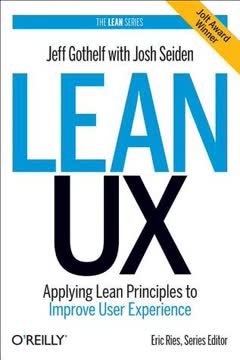

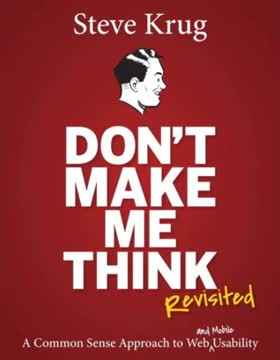

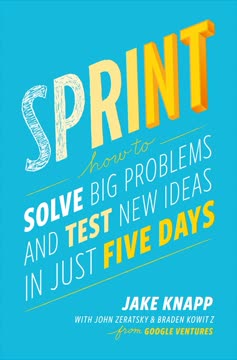

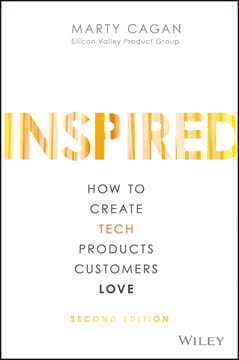

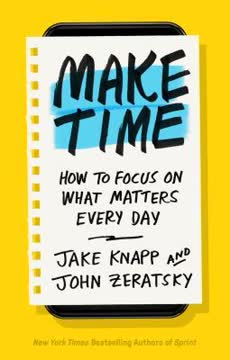
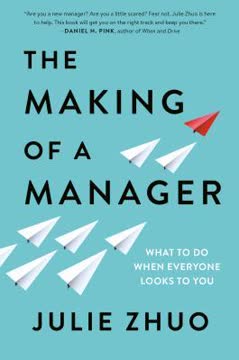
Download PDF
Download EPUB
.epub digital book format is ideal for reading ebooks on phones, tablets, and e-readers.




